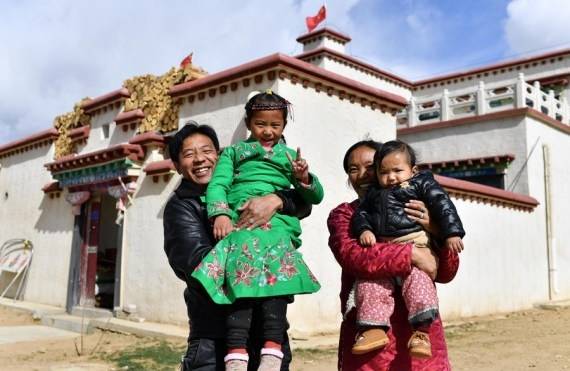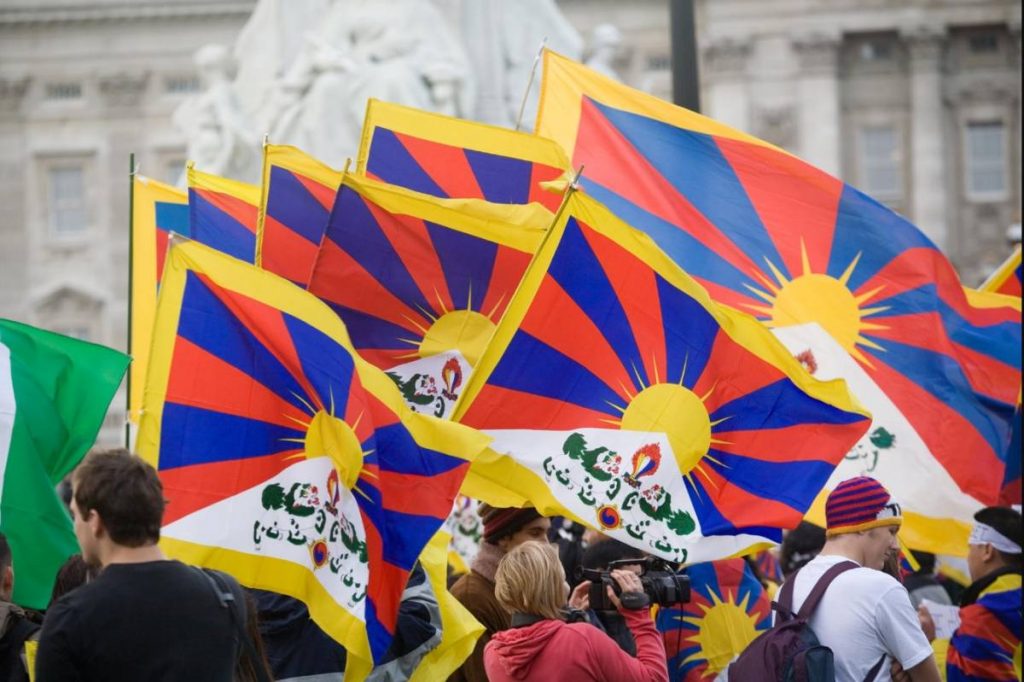For anyone interested in Tibet and wants to understand what the Chinese did to the region in this period, when they invaded Tibet must read Dunham’s graphic description of the carnage and violence inflicted by the PLA … writes Anand Kumar Sharma
China’s Hanization of Tibet is a well-known fact of history but not regularly revealed. Neither is the military invasion of Tibet by China and the forcible occupation of a once free nation leading to the Tibetan uprising on 10 March 1959. Mikel Dunham in his classic work “Buddha’s Warriors”, reveals: “During the Cultural Revolution of the 1960s, nearly 95 percent of the monasteries and temples of Tibet were razed to the ground and about 1.2 million Tibetans died. There are now over 7.5 million Chinese in Tibet compared with an indigenous population of 6 million.”
For anyone interested in Tibet and wants to understand what the Chinese did to the region in this period, when they invaded Tibet must read Dunham’s graphic description of the carnage and violence inflicted by the PLA. It is an important reminder of what military force can do to a civilian population that had no means of defending themselves. The odds were clearly levelled against Tibet. That is precisely why it is important to remember and recall the sacrifices Tibetans made on 10 March 1959.
The annual observance by Tibetans and their supporters around the world of the 62nd anniversary of the Tibetan Uprising Day on 10 March 2021 is thus important. Uprising Day is observed every year to commemorate the 1959 peaceful uprising against Communist China’s repression in Tibet’s capital Lhasa. There are several instances of Chinese historiography which give us a glowing narrative of the successes of the Chinese Communist Party (CCP) in building China. However, what one does not find in the communist history of China, is a realistic appreciation of what China did to Tibet after it occupied this once free land in 1951. Obviously, China does not want to reveal its dark past!

It is worth recalling that Tibet was a sovereign state before China invaded in 1950 and the People’s Liberation Army (PLA) entered northern Tibet. In 1951, a 17-Point Agreement was forced upon Tibetans by the CCP. Three years later over 200,000 PLA soldiers were stationed in Tibet. This led to famine conditions becoming rampant as Tibet’s delicate subsistence agricultural system was stretched beyond its capacity. The invasion of Tibet and subsequent events demonstrated that China had no intention of preserving Tibetan autonomy and institutions. Many Tibetans escaped persecution by the CCP by going to India, but only a small percentage survived the difficult conditions of the journey. The March 1959 uprising in Lhasa was triggered by the fear of a plot to kidnap His Holiness, the 14th Dalai Lama.
On 1 March 1959, while the Dalai Lama was preoccupied with taking his Final Master of Metaphysics examination, two junior Chinese army officers visited him at the Jokhang Monastery and pressed him to confirm a date on which he could attend a theatrical performance and tea at the Chinese Army Headquarters in Lhasa. His Holiness replied that he would fix a date once the ceremonies had been completed. The Dalai Lama was told to come alone and, warned that no Tibetan military bodyguards or personnel would be allowed to accompany him. On 10 March, fearing for the 14th Dalai Lama’s life, around 300,000 Tibetans surrounded Norbulinga Palace, to prevent the Dalai Lama, from accepting the PLA’s invitation. After the crowds refused to leave the compound, the PLA launched an attack killing thousands of innocent civilians.

An estimated one million Tibetans perished and, 98 per cent of monasteries and nunneries were destroyed under the PLA’s invasion under instructions of the CCP. The three major monasteries in Lhasa, Sera-Jey, Ganden, and Drepung, were seriously damaged by shelling, with Sera and Drepung being damaged nearly beyond repair. Members of the Dalai Lama’s bodyguard who had stayed back in Lhasa were disarmed and publicly executed, along with Tibetans found to be harbouring weapons in their homes. Thousands of Tibetan monks were executed or arrested, and monasteries and temples around the city were looted or destroyed.
Also read:China greatest long-term threat: Pentagon
The Tibetans were hopelessly outnumbered and only seven days later, fearing for the lives of his people, the 14th Dalai Lama escaped to India and took refuge along with around 80,000 other Tibetans. By 17 March, the Chinese had aimed artillery at the palace and the resulting melee ended up killing a million Tibetans, with many more arrested or deported to labour camps. That day is marked as the most brutal and barbaric day on the part of China, leading to the death and imprisonment of hundreds of thousands of Tibetans.

Also, 10 March is regarded as ‘Tibetan Martyrs’ Day’, dedicated to the patriotism of the heroic men and women of Tibet.
In the aftermath of the uprising the CCP punished several thousand Tibetans and the consequences of this was embodied in a report of the International Court of Justice, Purushottam Trikamdas, then a Senior Advocate in the Supreme Court of India at a press conference (New Delhi) on 4 June 1959, Trikamdas stated that Tibetans were forced to work for China in the construction of roads and highways in Tibet. Many scores died performing this task, as they were underfed and kept in poor living conditions. Additionally, the Chinese destroyed thousands of acres of agricultural land in this process. This period also marked the start of the process of Hanisation of Tibet. It was estimated then that five million Chinese had been settled in Tibet. The Tibetan population was then around 3 million.

Writing in the New York Times, (2016) Luo Siling said, “Generations of Chinese have been taught that the Tibetan people are grateful to China for having liberated them from “feudalism and serfdom,” and yet Tibetan protests, including self-immolations, continue to erupt against Chinese rule”. This reality can only be understood when one reads the history of Tibet, in particular its occupation by China and the swift but brutal military campaign carried out which resulted in the wanton destruction of Tibetan culture, religion and above all its identity as a nation. An understanding of Chinese actions in Tibet will explain to the world why Tibet has been in ferment and continues to be so. This is what one must remember as the world commemorates the 62nd anniversary of the Tibetan uprising on 10 March 2021.
Also read:Pelosi tears into China on Tibet

